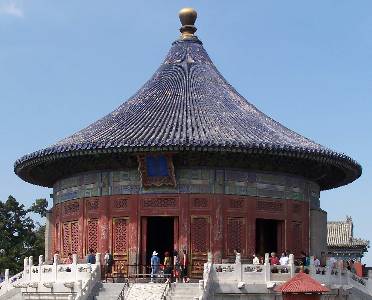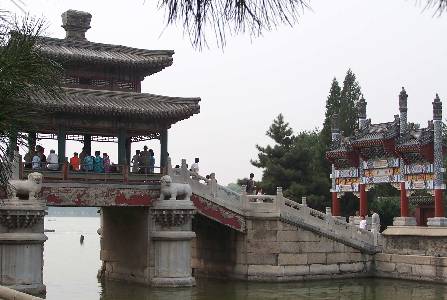


Home Click on Images above to Enlarge



Home
Click on Images above to Enlarge
2008 IEEE International Ultrasonics Symposium (IUS)
Beijing International Convention Center (BICC)
Beijing, China, November 2-5, 2008 (View: Conf. Photos/Videos and ![]() Beijing Photos
Beijing Photos ![]() )
)
|
|
Sponsored by the IEEE Ultrasonics, Ferroelectrics, and Frequency Control Society |
|
Plenary Speaker
Title of Presentation:
Acoustics of Traditional Chinese Theatrical Buildings
The Author:
Jiqing Wang, Institute of Acoustics, Tongji University, Shanghai, China 200092, E-mail: wongtsu@126.com
Abstract:
The traditional Chinese theatrical building is a unique form in the architectural world. The Chinese opera matured as early as the Song and Yuan Dynasties, 11th?4th Centuries, and Chinese theatrical buildings developed accordingly. As the Chinese opera plays on the principle of imaginary actions, no realistic stage settings are required. But since ancient times, Chinese audiences have placed great demands on vocal performances; therefore, the acoustic effect of a theatre is a major concern to the audience as well as the performers.
Pavilion stages, that are small in area, open on three sides, and thrusting into the audience area, are commonly found in traditional Chinese theatres, both in the courtyard type and the auditorium type. Numerous theatres of the kind built in the Qing Dynasty, 17th?9th Centuries still exist, and in fact at the present day, some are still functioning in good condition. A study on the sound effects of the traditional Chinese theatres has been conducted with the knowledge of modern architectural acoustics.
As the courtyard theatre was a popular type of traditional Chinese theater at that time, its acoustic phenomenon is quite different from that of an enclosed space due to the absence of a roof. Therefore, the classic room acoustics, such as Sabine reverberation formula, is no longer applicable. It is well known that the parameter of reverberation time T60 shows the decay rate only, however it cannot properly characterize the prominent change in the fine structure of the echogram, particularly in case of a large reduction of reflections from the ceiling during the decay process. The sense of so-called 2.5D reverberation time in a courtyard space would differ from that of the equivalent 3D reverberation time in an enclosed space. Based upon the characteristic analysis of the sound field in an open-top space, a preliminary study on the acoustics of the courtyard theatre, both objectively and subjectively, will be introduced.
Professor Jiqing Wang:
Jiqing Wang is a Professor of Acoustics, Institute of Acoustics, School of Science (1981-present), and was also once the Director of Graduate Program on Architectural Science, School of Architecture and Urban Planning (1985-2002), Tongji University, Shanghai, China. He is a Fellow of Acoustical Society of China and a Fellow of Acoustical Society of America. He has served as the Chairman of the National Building Science Committee (1996-2000), President of the Acoustical Society of Shanghai (1987-1991), executive member of the Acoustical Society of China (1988-1998), technical member of the Acoustic Standardization Committee of China since 1980, and editor-in-chief for the Chinese journal of Technical Acoustics (1990-2004). He was the author and co-author of five books on architectural acoustics in Chinese, and published over 130 papers. He has also delivered several plenary, keynotes, invited and professional lectures worldwide.
External Links for Viewing Beijing Opera That Is Related to the Talk:
Huguang Guild Hall: https://www.frommers.com/destinations/beijing/N20119.html
Zhengyici Theatre: https://en.wikipedia.org/wiki/Zheng_Yici_Peking_Opera_Theatre
Beijing Opera Places: https://www.beijingmadeeasy.com/beijing-arts/where-to-see-opera-in-beijing
Beijing Opera in Wikipedia: https://en.wikipedia.org/wiki/Beijing_opera
Slides and Movie Clip Presented During the 2008 IEEE International Ultrasonics Symposium on November 3, 2008:
|
|
|
Some Photos That Are Related to the Talk (Please click on the photos to enlarge):
|
Chinese Traditional Opera (click to enlarge) |
|
Grand View of Performances (click to enlarge) |
|
|
|
More Theater Stages (click to enlarge) |
|
More Theater Stages (click to enlarge) |
Home Contact the webmaster, Dr. Jian-yu Lu, for questions. © Copyright 2006-2008 IEEE UFFC Society